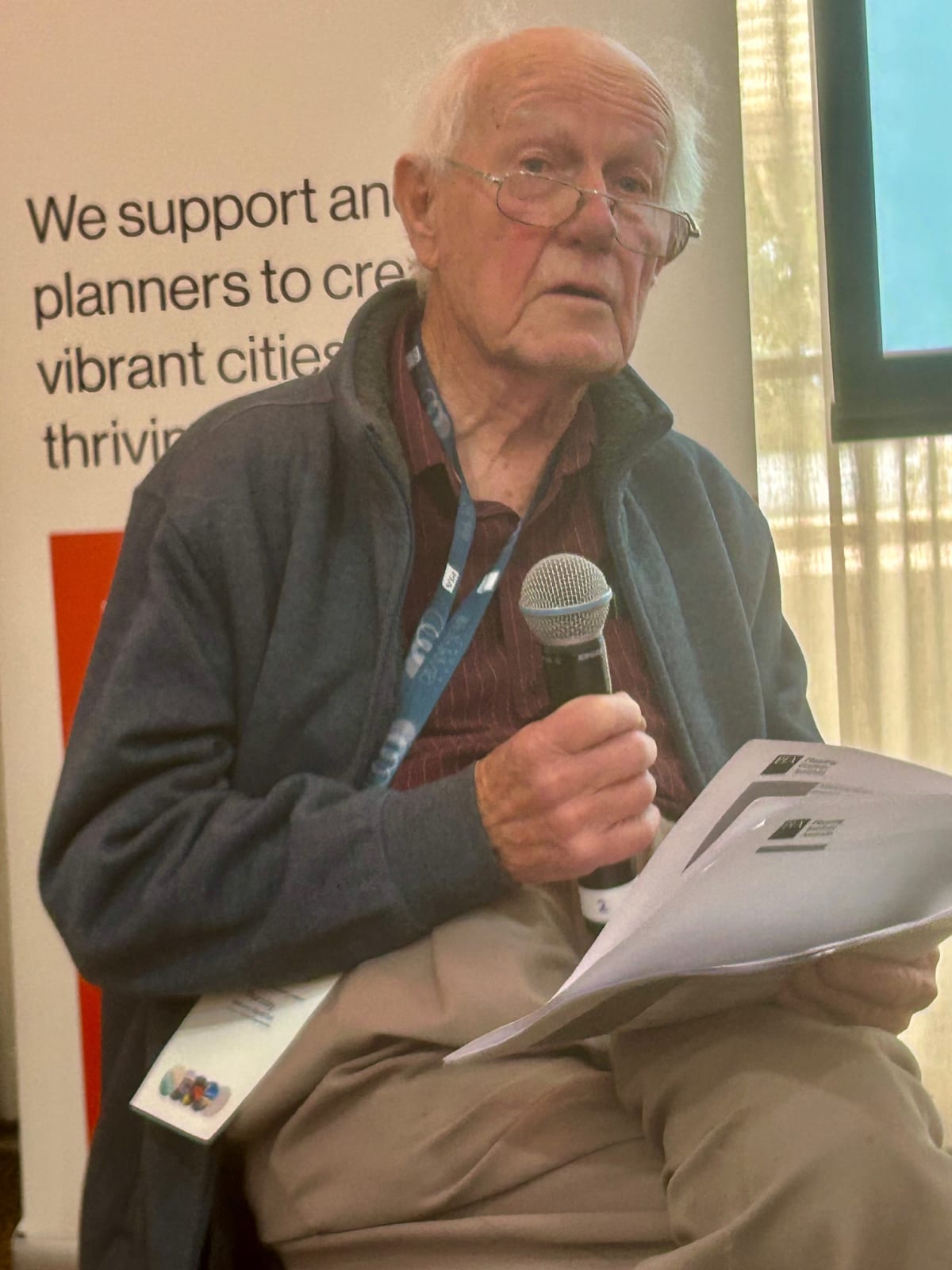Looking back at a ‘golden era’ for Wollongong with its former planning guru
In the 1980s and 1990s Wollongong was undergoing what was probably the biggest transformation in the city’s history. At the time, eminent town planner David Winterbottom was at the heart of guiding the city through an uncertain future. Forty years...

In the 1980s and 1990s Wollongong was undergoing what was probably the biggest transformation in the city’s history.
At the time, eminent town planner David Winterbottom was at the heart of guiding the city through an uncertain future.
Forty years later, and having recently turned 90, David took us back in time during his presentation to September's NSW Planning Institute of Australia’s NSW Conference, titled ‘When Wollongong Reinvented Itself’.
His story began in the year he arrived in the Illawarra to take on the Director of Planning role at Wollongong City Council, and it was a baptism of fire.
When the steelworks crashed
“In about 1981, the Port Kembla Steelworks crashed,” David said.
In the decade that followed employment at the steelworks and associated industries fell by around 15,000.
“When one takes into effect the multiplier effect, that is people in the retail, health, education and other services, the impact was perhaps twice as big. It was a real kick in the guts,” he said.
“It required a whole of council response, not just a planning response. The first priority was to create an economic development unit to turn things around.”
A Port Kembla Harbour Task Force was created to revitalise the port and create new jobs. Successful projects included the establishment of the grain terminal and container terminal in a unique situation where unionists worked with farmers for a mutual benefit.
“We did an analysis of where there were other gaps in reviving the city and we got to work.”
Efforts were made to attract major firms to Wollongong to take advantage of the skilled workers who lived here and the Lord Mayor of the day, Frank Arkell, whose catchcry was ‘Wonderful Wollongong’, wined and dined potential new businesses in parliament house where he was Wollongong’s state member.

The city centre was a mess
“The city centre at this time was a mess,” David said.
Major retailers David Jones and Grace Brothers were wooed into the heart of the city “but Grace Brothers said they wouldn’t come unless a pedestrian mall was introduced in Crown Street.”
Four design firms were paid to submit plans for the Wollongong city mall and after public exhibition council chose a design with a striking aerial cover for climate control and a gateway component at the western end to protect shoppers from the fierce westerly winds.
“We had a fantastic new mall which became known worldwide as iconic. It was a marketing tool for the city.”
The mall included water features, seating, a stage area for entertainment and a children’s playground. Cafes were encouraged to put seating outdoors and buskers provided regular music to enliven the precinct.
“It also resulted in a 30 per cent increase in retail space at a time when there was no population growth and it stopped escape spending.”
Creating a cultural precinct
At the same time a cultural precinct was created nearby in Burelli Street.
“Plans were made for a performing arts centre with two theatres, It opened in 1988 on one side of a new civic square opposite the old heritage town hall, which is still used for events while the original council chambers was converted into an art gallery. ”
Having vacated the old town hall building to a new, swish 10-storey headquarters, council persuaded the federal government to build new offices on a nearby site in Burelli Street. When a state office building was built nearby the area of the city south of the mall was rejuvenated.
David credited the success at the time on a united team effort, led by the Lord Mayor and a very supportive Town Clerk and good staff which included city architect Magdy Youssef, who insisted on quality design.
Lifting the city’s image
“We set up a design review committee and introduced annual design awards to help lift the image of the city.”
Mr Winterbottom said a significant impediment to new investment was the industrial image of the city with the negative impression created by the steelworks, copper refinery, coke works and coal mines.
Again, using the considerable influence of the Lord Mayor, the various industries were asked to help promote the area as ‘Industry World’ which included tours and helped turn a negative into a positive by using the steelworks as a tourist attraction and educational opportunity. “It helped change the image from a nasty place to some of the amazing things they do making steel.”
The university lifts our economy
In his presentation, David credited a series of “brilliant” vice chancellors for propelling the university to international heights and helping change the city’s economy in the process.
In what was a remarkable decade or so for the city, Wollongong at the time was seen as a city on the move, willing to take risks and just perhaps it was a ‘city of innovation’ decades before that tagline was formally adopted.
Looking back at what was achieved, David Winterbottom admits it was a period of great change and great pride for everyone involved.
“Wollongong’s lesson was that planning was not just about making plans and then ensuring developers complied with them. It was planners, with others, going out and making development happen, improving the urban scene and ensuring that the environment was enhanced. The results helped stave off a major recession and, with the rapid growth of the University of Wollongong, the city has not merely survived but thrived.”
This article includes content from David Winterbottom’s interview during the Planning Institute of Australia’s annual conference and his formal presentation ‘When Wollongong Re-invented Itself’.





